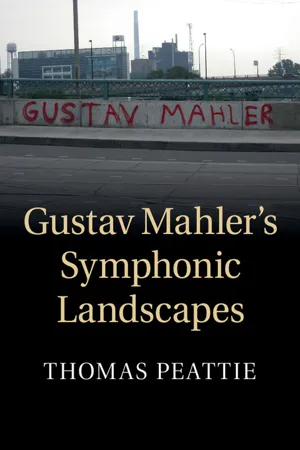Gustav Mahler's Symphonic Landscapes
About this book
In this study Thomas Peattie offers a new account of Mahler's symphonies by considering the composer's reinvention of the genre in light of his career as a conductor and more broadly in terms of his sustained engagement with the musical, theatrical, and aesthetic traditions of the Austrian fin de siècle. Drawing on the ideas of landscape, mobility, and theatricality, Peattie creates a richly interdisciplinary framework that reveals the uniqueness of Mahler's symphonic idiom and its radical attitude toward the presentation and ordering of musical events. The book goes on to identify a fundamental tension between the music's episodic nature and its often-noted narrative impulse and suggests that Mahler's symphonic dramaturgy can be understood as a form of abstract theatre.
Frequently asked questions
- Essential is ideal for learners and professionals who enjoy exploring a wide range of subjects. Access the Essential Library with 800,000+ trusted titles and best-sellers across business, personal growth, and the humanities. Includes unlimited reading time and Standard Read Aloud voice.
- Complete: Perfect for advanced learners and researchers needing full, unrestricted access. Unlock 1.4M+ books across hundreds of subjects, including academic and specialized titles. The Complete Plan also includes advanced features like Premium Read Aloud and Research Assistant.
Please note we cannot support devices running on iOS 13 and Android 7 or earlier. Learn more about using the app.
Information
Table of contents
- Cover
- Half-title Page
- Title Page
- Copyright Page
- Dedication
- Contents
- Figures
- Acknowledgements
- Introduction: Hearing Mahler
- 1 The expansion of symphonic space
- 2 “Distant music”
- 3 Alpine journeys
- 4 Symphonic panoramas
- 5 Wanderers
- Bibliography
- Index
